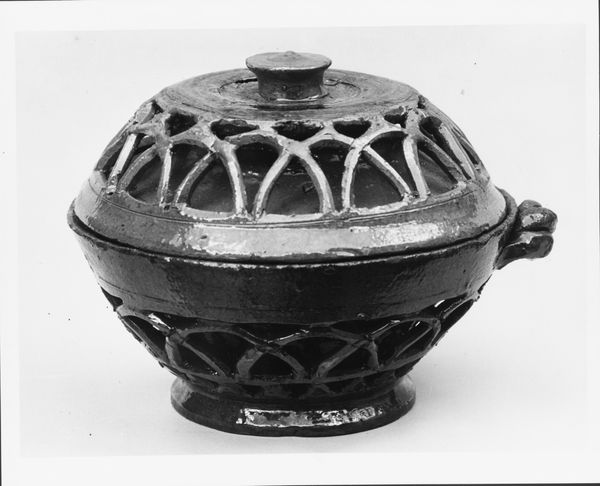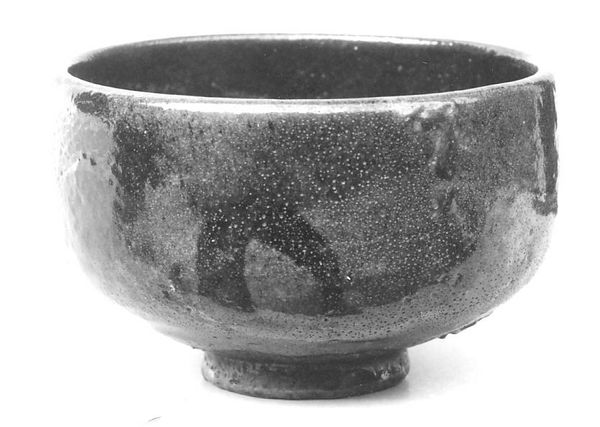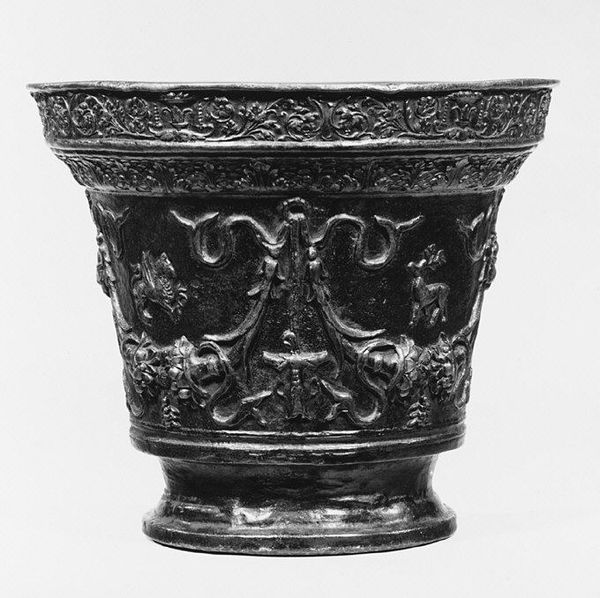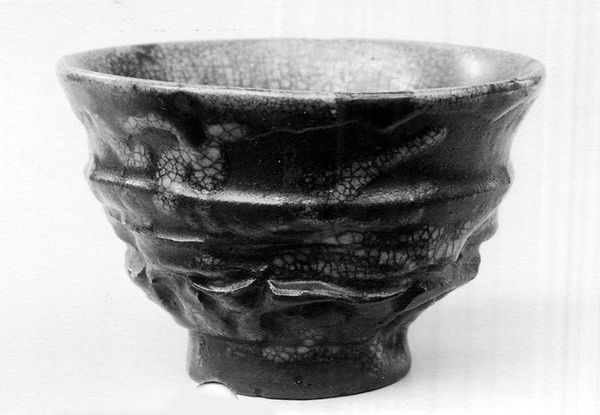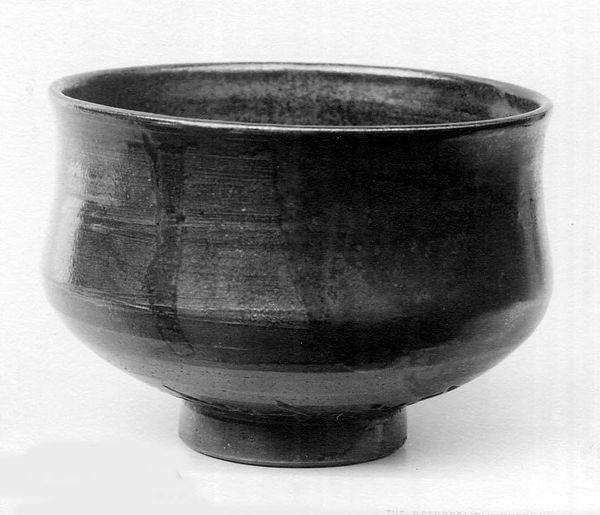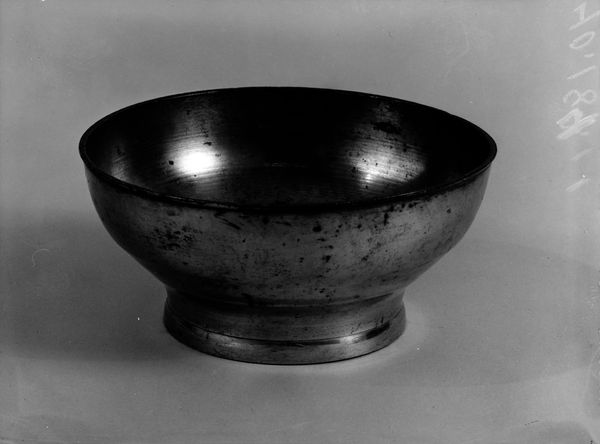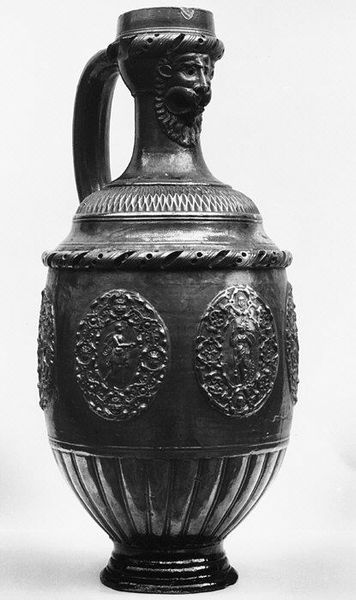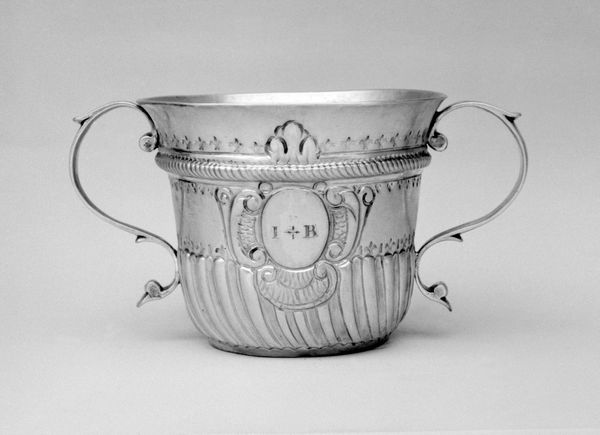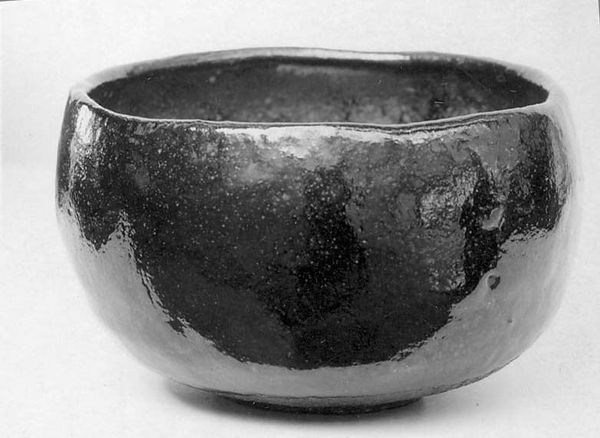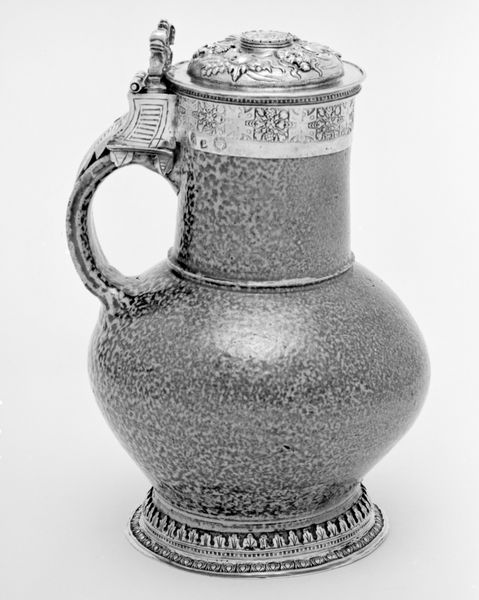
relief, bronze, sculpture
#
medieval
#
relief
#
bronze
#
sculpture
#
decorative-art
Dimensions: Overall: 14 × 19 1/4 in. (35.6 × 48.9 cm)
Copyright: Public Domain
Editor: So this is the Mortar, created in 1502 by Guglielmo de Monaldis. It's currently held at The Met in New York. It is made of bronze and features some relief sculpture. It looks remarkably well-preserved, and I'm intrigued by the elaborate detailing on something so utilitarian. How might we read the story of its making, its purpose, and its context? Curator: Focusing on the materiality, it's important to consider bronze itself. This wasn't simply a neutral material. The casting of bronze involved specific skill sets, organized workshops, and access to raw resources – implying Monaldis’s access to capital. Look closely. Do you see evidence of casting marks, repairs, or surface treatments? These details would reveal aspects of the production process. Editor: I can see that the relief detailing is incredible. What does that mean to how it would have been used? Curator: Exactly! Was it primarily functional, or was there an element of display involved? A mortar of this kind would likely be for compounding ingredients. But the detailed reliefs elevate it. Who would have owned this? Would it be a pharmacy, a kitchen in an important house, or a workshop? Its very existence prompts questions about labor practices. Who cast it? Who used it? How did its manufacture and use reflect the social hierarchies of the time? The inscriptions would likely give us further clues. Editor: So, seeing it less as a simple object and more as a product of specific socio-economic factors within a period. Curator: Precisely! Considering art, craft, and production equally helps us appreciate the historical moment of an object like this Mortar. Understanding the economic system, technical expertise, and the intention around use are vital to interpreting its significance. Editor: It makes me consider all the skilled labour and trade that were required for its production and use. Thanks for a new way of viewing such a functional object!
Comments
No comments
Be the first to comment and join the conversation on the ultimate creative platform.
